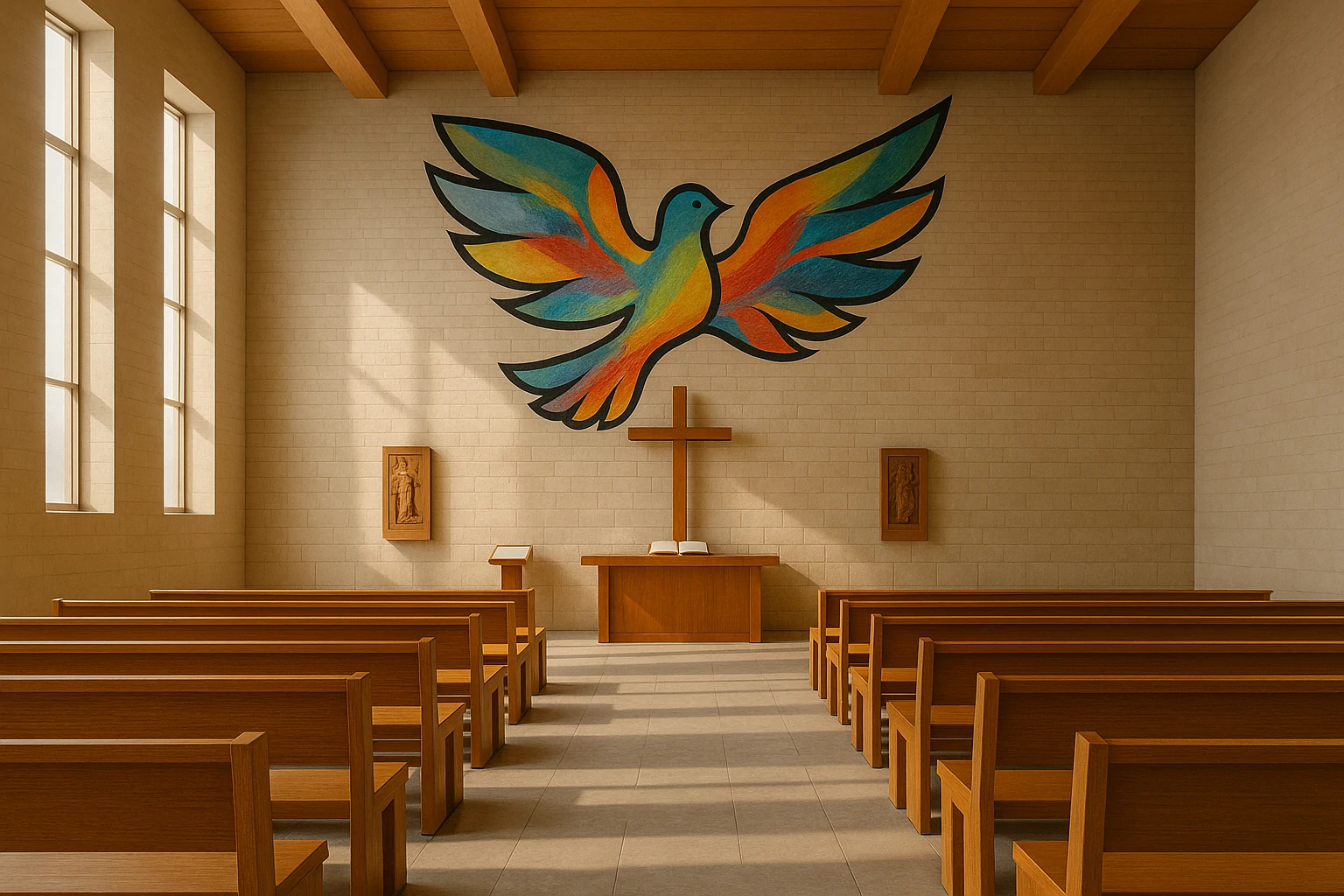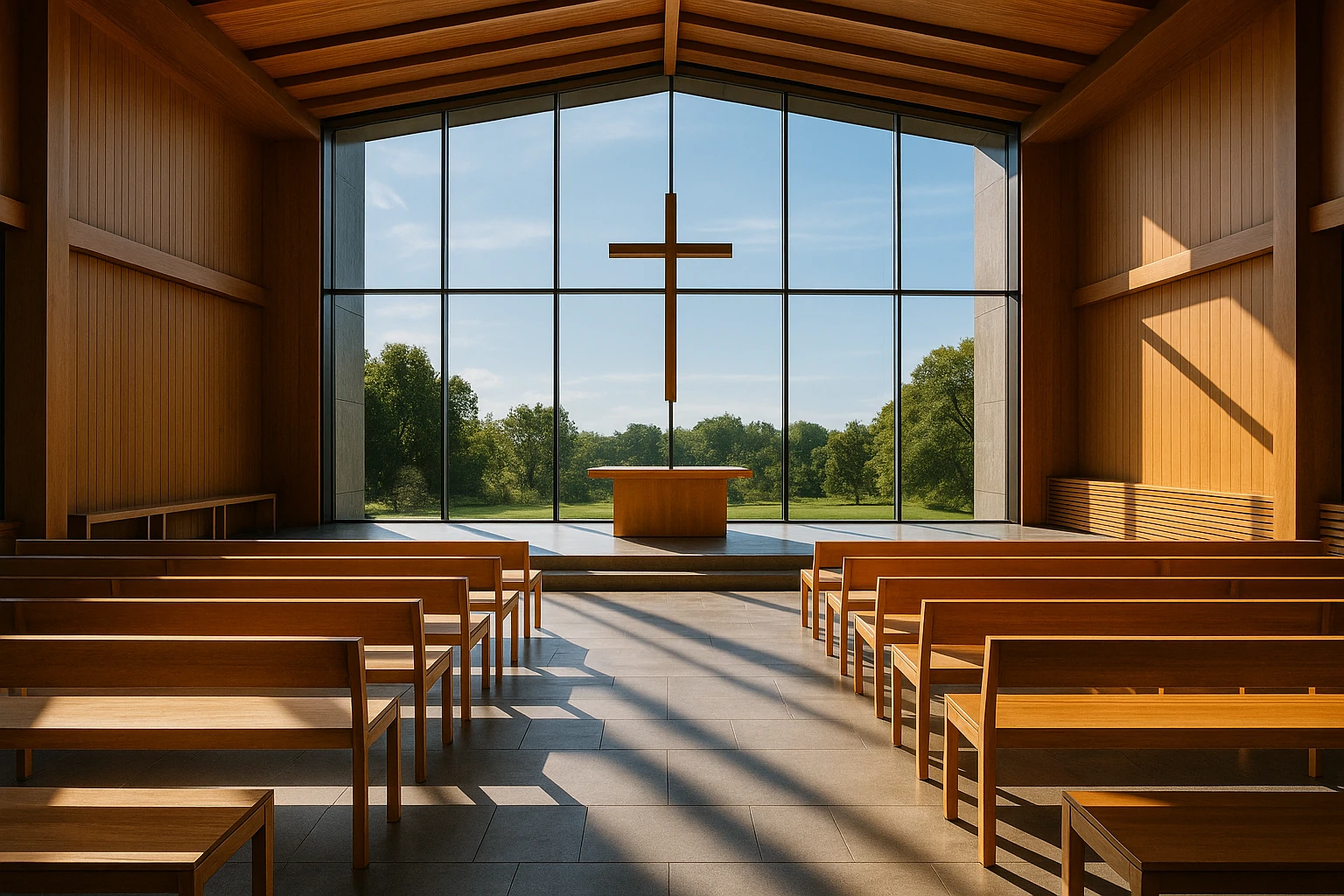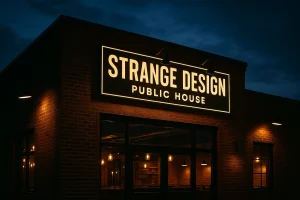Church buildings have changed with time. The older designs followed one clear model. Most had pointed roofs, narrow towers, and colored glass. People knew them by sight. They gave a sense of awe. Still, many churchgoers today want more than that. They want a space that feels open and works for different needs.
Modern churches take a new path. They no longer focus only on how a building looks. They care about how it works. A church today may host worship on Sunday, offer child care on Monday, and hold community meals midweek. These changes shape the way churches look, inside and out.
Designers now think about people first. They create places where guests feel welcome. The new church is open, light, and simple. It keeps faith at the center, but it also gives space to connect. It meets spiritual needs and supports daily life. This guide shows how churches now blend beauty, purpose, and comfort.
Each part of the building serves a role. From the windows to the walls, every detail must help the mission. A good design honors the past but looks ahead. It helps people gather, reflect, and grow together. That is the heart of modern church design.
Leaving Old Styles Behind
Older churches followed set rules. They looked grand and formal. Tall doors, heavy walls, and sharp arches gave a strong message. People often sat in rows with little room to move. The priest or pastor spoke from a high pulpit. The building created distance. That design worked for its time, but things have changed.
Today’s churches aim for closeness. They drop steep towers and tight aisles. Some look like schools or meeting halls. Others feel like open homes. The new goal is not to impress but to invite.
Many churches now use plain shapes. The walls may be smooth, and the roof may be flat. Glass replaces stone. Light flows in. The building looks clean and calm. That calm feel helps people focus. It makes worship feel more personal.
Inside, pews no longer fill every row. Chairs now take their place. They move easy. They fit many setups. One day, the room may host a prayer group. The next, a family dinner or a kids’ class. This shift gives freedom. It also builds stronger ties.
Some churches still reflect rich, detailed looks like Victorian Gothic interior design.
Light and Space Feel Like Welcome

Churches today use natural light as a core feature. Sunlight brings warmth. It lifts the mood. It brightens every corner. Windows stretch wide. Skylights sit above. Every part of the building tries to pull in more light.
The shape of the building helps this. Walls may tilt to catch the morning sun. Ceilings rise to let the light fall deep. Doors often have clear panels. Even small rooms use glass. Nothing feels closed off.
Space adds to this effect. Rooms feel large, even if they are not. A wide hallway. A tall ceiling. A clean view from front to back. These details open the mind. People feel free to breathe and reflect.
Visitors do not want to feel lost or boxed in. They want room to pause. Room to think. Churches that feel open draw people back.
Churches That Serve Many Roles
Modern life is busy. Churches must meet more needs. One room must do many things. That means the design must adapt fast.
Movable walls help divide space. Sliding panels open or close rooms in minutes. Folding chairs stack away. Tables shift from meals to crafts to meetings. Nothing stays fixed.
The entry area now looks more like a welcome space. It may have seats, drinks, or books. Some churches add a play zone for kids. Others use the space to meet new guests. A good welcome sets the tone.
Close to the main room, you will find clean restrooms. Some churches add changing tables or nursing rooms. Families feel seen. These features turn a visit into a habit.
Offices, kitchens, or study rooms sit nearby. The whole place runs with ease. It fits both quiet prayer and loud events. One space serves many needs.
Simple Materials That Last Long
| Material | Strength or Purpose |
|---|---|
| Concrete | Cleans fast and stays strong |
| Wood | Adds warmth and a natural look |
| Metal | Holds shape and gives firm support |
| Glass | Brings light and keeps the space open |
| Double‑pane glass | Blocks heat and reduces noise |
| Recycled wood | Cuts waste and adds character |
| Old bricks | Gives new life to past structures |
| Bamboo | Offers a calm look and supports green goals |
| Clay tile | Lasts long and keeps the space cool |
Smart Tech That Stays Quiet
Technology helps modern churches reach more people. It brings worship into homes and connects guests from far away. Still, the tools must not take over the space. They must support the message without noise, glare, or clutter.
Built-in systems now guide sound, light, and visuals. Speakers stay hidden in walls. Wires run beneath floors. Screens fold away or slide out with ease. Lights shift smoothly during service. The setup feels clean and quiet. Guests focus on the sermon, not the gear around them.
Churches often stream services live or record them for later. This needs strong power, steady networks, and clear sound. Many rooms now include cameras, projectors, and mics. But these tools stay out of sight. Designers use smart panels and apps to control the flow without delay or error.
Future upgrades matter too. Builders plan ahead with open cable paths, extra ports, and easy access points. As new tools come in, the church can grow without starting over. In every case, the goal stays the same: keep tech helpful, not distracting. Let it lift the message, not steal the moment.
Answer: Yes. A simple space with clean light and thoughtful layout can feel just as holy as a tall cathedral. It’s not the shape. It’s the purpose and presence.
Every Person Should Feel Welcome

A church must open its doors to all. No guest should feel left out because of age, ability, or need. True faith welcomes every person, without limits. Access is not a feature. It is a duty.
Modern churches now design with care. Ramps lead to main doors. Walkways stay wide and flat. Doors swing open without force. Bright lights help people see clearly. Signs use bold text that is easy to read. These small steps make a big difference.
Inside, the seating adjusts to real needs. Chairs can move for wheelchairs, strollers, or service animals. Some guests need space from crowds. Others need help with sound or light. Many churches now include quiet rooms. These spaces give comfort without shame.
Bathrooms sit near the main hall. Many offer family-friendly stalls. Some include touchless sinks and clean stations. These updates cost little, but they matter. They show that the church sees every guest, respects them, and wants them to return. True welcome lives in the details.
Outdoor Space Adds Calm
New Ways to Show Faith Through Art

Art still plays a key role in modern churches. The look has changed, but the meaning stays strong. Faith speaks through shape, color, and design.
Some churches use murals instead of stained glass. Others place metal crosses or wooden panels with scripture. A few show bold, abstract pieces behind the pulpit. These forms may break old patterns, but they hold deep purpose. They tell stories. They draw the eyes and stir the heart.
Local artists often lead these works. Their style reflects the culture of the people. This brings the church and the community closer. The space begins to feel personal, not distant.
Art should not sit in silence. It should speak. It should lead the mind to reflect. It should give peace. A church gains more than beauty through art. It gains soul.
Places like cafés or ice cream shops also use design to shape how people feel. See how this works in ice cream shop interior design. Churches and community spaces both rely on mood, light, and layout to speak without words.
Grow Slow, Plan Smart
Not all churches open with full space. Many start small and grow. This takes care and vision.
The design allows stages. One room at first. Then more later. Each step keeps the flow. Nothing feels lost.
Builders use shapes that connect well. A square hall. A flat roof. These parts add easy. The church may begin with a single door and rise to ten.
This saves cost. It also keeps the spirit alive. Growth feels planned, not rushed.
Even a small space can hold strong faith. Even a small space can welcome many.
Conclusion
Modern church design has changed with purpose. It still honors faith but now meets the needs of real people. Old buildings once aimed to impress. New ones aim to welcome. The shift moves from grand looks to open hearts.
Light fills rooms through wide windows. Walls do not block the flow. Doors open without struggle. Every walkway stays wide and calm. These simple choices change how people feel. They bring peace. They build comfort. They help worship feel close and real.
Churches do not follow one shape now. Some stand tall in busy cities. Others sit low in quiet towns. But they all share one goal. They offer a safe and warm place. They make people feel seen. They invite all to stay and return.
A church is more than its walls. It holds faith, care, and community. It offers hope in hard times and joy in good ones. A strong design lifts that purpose. It does not just build space. It creates belonging.
What Do You Think?
Should churches look more modern or stay traditional? Share your thoughts in the comments below or email us at info@homeflashy.com.
People Also Ask
What makes a church design feel modern?
Modern churches feel open, bright, and simple. They use natural light, clear paths, and flexible layouts. The space fits more than worship. It supports daily life and welcomes all people.
Why do churches use chairs instead of pews now?
Chairs offer more freedom. They move easily. They help change the space for events, meals, or group study. This makes the church feel active and alive.
How do churches stay eco-friendly today?
Many churches use green materials. Some add solar panels or rain tanks. Others reuse old wood or bricks. These steps save money and help the earth.
What role does art play in modern churches?
Art still shows faith. It now takes new forms like murals, metal symbols, or wood panels. Local artists often create these pieces. They help the space feel warm and full of meaning.
Can a small church still feel modern?
A small space can still feel open and fresh. Good design uses light, clean shapes, and smart layouts. Even one room can serve many needs with care.
How does technology help in church design?
Tech brings worship to more people. It helps with sound, video, and lights. The setup stays hidden. It supports the message without noise or clutter.
What should churches avoid in design?
Crowded rooms, dark corners, or poor access can drive people away. A good design feels clear, safe, and calm. It must serve both spirit and need.


